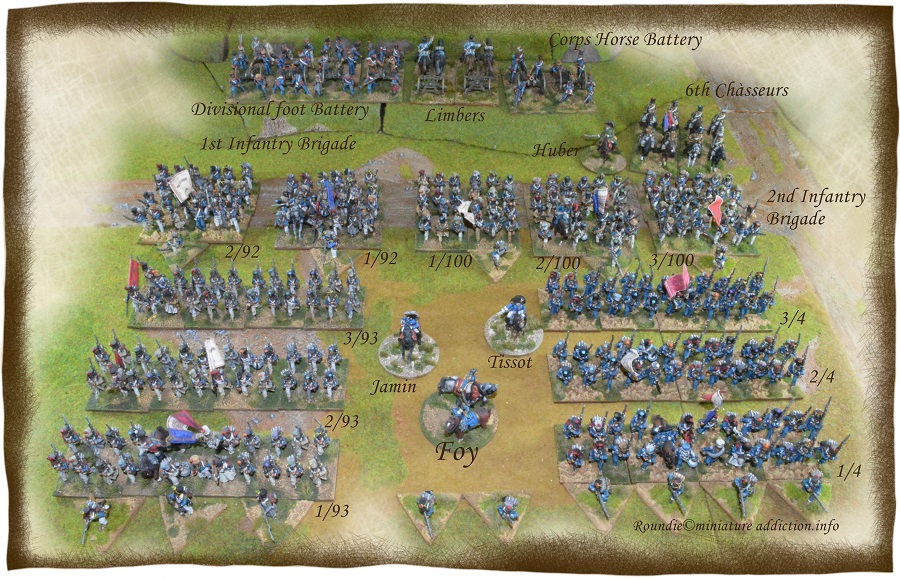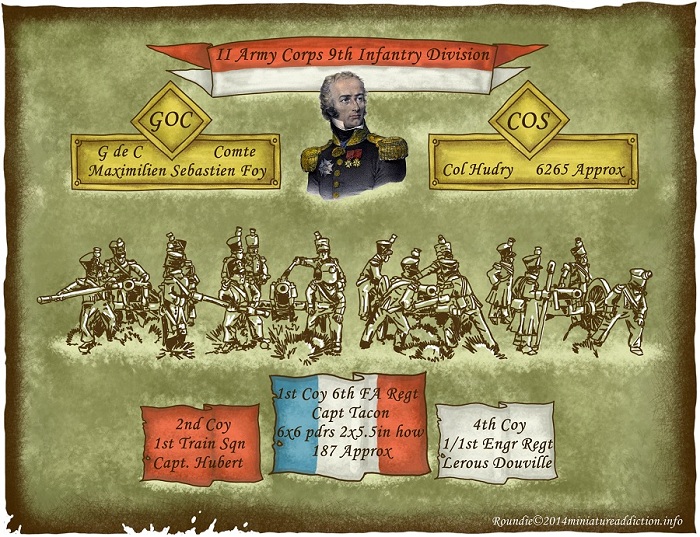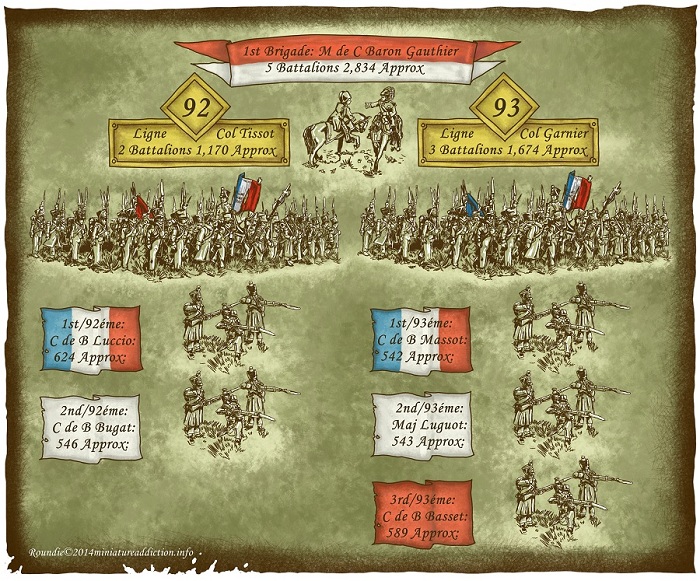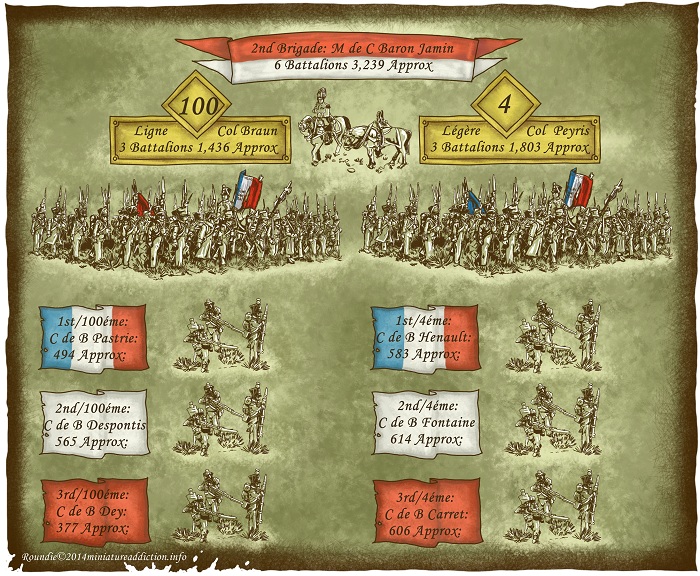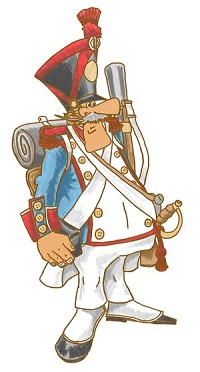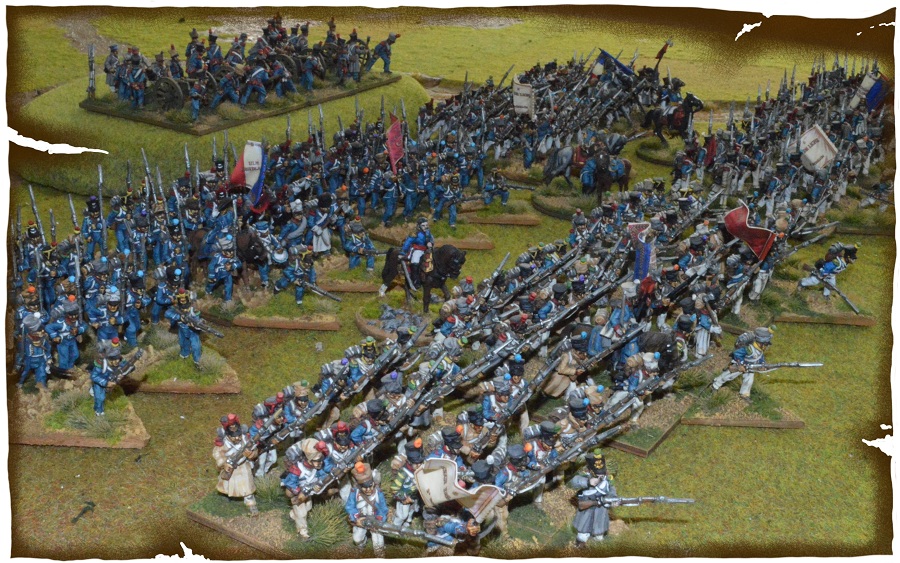
With just the limber teams to paint/re-base for this 28mm army, I thought now is probably the best time to add some pictures to the web site. There is only a small window of opportunity here (time wise) before I get distracted by a shiny new project. Wanting more than just a simple gallery I have been working on some basic uniform guides as well as figure and basing information for each of the divisional units. Linked to the pictures below are Artillery, and infantry brigade pages showing each respectively in more detail. I will also add a support/reserve page with horse artillery and cavalry unit details at a later date.
The Order of Battle detailed below is my own. Commander and unit wise it is mainly based around information from Mark Adkin’s book The Waterloo Companion.
However it should be noted that this list is intended to represent the commanders and unit strengths as they were before the action at Quatre Bras and as such differ from every list I have found thus far.
Foy’s division sustained around 800 casualties at Quatre Bras and most lists (I have found) are either post Quarte Bras or seem not to take these losses into account. The numbers listed below are probably airing on the high side, but by averaging and adding (more less) the casualties detailed above across the two brigades is how I came up with the unit totals shown below.
In short for the purists out there that know better I salute you, for those like me that don’t this is just my best guess, please treat it as such.
Division Artillery Details ▼
G de D Comte Maximilien Sebastien Foy.
Commissioned at the age of seventeen as an artillery officer. He was promoted to général de brigade in 1808 and général de division in 1810. A competent commander and staff officer he received his fifteenth war wound at Waterloo. Surviving the battle he went on to write an account of the Peninsular war before he died from a heart attack in 1825 at age fifty.
1st Infantry Brigade Details ▼
92nd Légne infantry regiment.
The regimental commander, Colonel Tissot became the acting brigade Commander at Waterloo as G de B Baron Gauthier, was badly wounded in the fighting at Quatre Bras. Finally succumbing to his injuries, Gauthier died in November of 1815.
93rd Légne infantry regiment.
The 93rd Ligne regiment seems to be the most controversial of the four regiments listed here. Most lists I have looked at differ on two main points. Firstly, in the number of battalions that were present for the
campaign some only list two while others give details for three. I went with the latter (three) as detailed in Mark Adkin’s The Waterloo Companion (one source among others that list this number). The second anomaly appears to be the regimental commander at the time. Some list Colonel Jean-Baptiste Garnier (as did I), while others list C de B Masset (commander of the 1st Battalion). Mark Adkin’s book sights Masset as the acting commander, but gives no clues/details about Garnier. Major Luguot and C de B Basset were both wounded at Waterloo.
2nd Infantry Brigade Details▼
4th Légère infantry regiment.
The regiment’s commander Colonel Vincent Peyrus was severely wounded on the 16th of June at Quatre Bras and was subsequently replaced by C de B Damamm (Mark Adkin’s The Waterloo Companion ) who was in turn wounded at Waterloo. Henault, the commander of the 1st battalion was also wounded at Waterloo.
100th Légne infantry regiment.
Joseph Braun was appointed colonel of the 81st (formerly the 100th) on July 18 1814 after the Emperors abdication. He maintained command of his regiment (retitled the 100th) for the 100 days campaign.

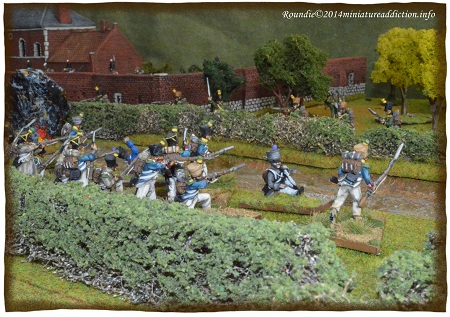
Above the 92nd and 93rd attack the great orchard to the left of Hougoumont. Below shows the whole division with it’s attached artillery battery.
